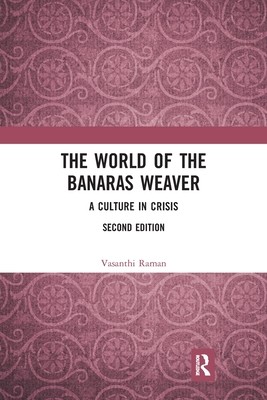
- We will send in 10–14 business days.
- Author: Vasanthi Raman
- Publisher: Routledge Chapman & Hall
- ISBN-10: 0367784769
- ISBN-13: 9780367784768
- Format: 15.6 x 23.4 x 1.9 cm, softcover
- Language: English
- SAVE -10% with code: EXTRA
Reviews
Description
This book is a fascinating investigation into how communalism plays out in everyday India. Using the metaphor of tana-bana - the warp and the weft of the Banarasi sari - the author reproduces the interwoven life of Hindu-Muslim relations in the Banarasi sari industry.
As the city of Banaras in Uttar Pradesh takes the centre stage as the site of this ethnographic study, the author documents the dissonance in representations of Banaras as a sacred Hindu city and its essential plural character. The volume
- examines in-depth the lives of Banaras Muslims in the social and economic matrix of the sari industry;
- highlights how women negotiate between home, family and their place in the artisanal industry; and
- sheds light on their fast-changing world of the Banaras weavers and their responses to it.
With a new introduction and fresh data, the second edition looks at the subsequent developments in the weaving industry over the last decade. This volume will be of immense interest to scholars and researchers of social anthropology, gender studies, development studies, sociology and South Asian studies.
EXTRA 10 % discount with code: EXTRA
The promotion ends in 17d.10:34:48
The discount code is valid when purchasing from 10 €. Discounts do not stack.
- Author: Vasanthi Raman
- Publisher: Routledge Chapman & Hall
- ISBN-10: 0367784769
- ISBN-13: 9780367784768
- Format: 15.6 x 23.4 x 1.9 cm, softcover
- Language: English English
This book is a fascinating investigation into how communalism plays out in everyday India. Using the metaphor of tana-bana - the warp and the weft of the Banarasi sari - the author reproduces the interwoven life of Hindu-Muslim relations in the Banarasi sari industry.
As the city of Banaras in Uttar Pradesh takes the centre stage as the site of this ethnographic study, the author documents the dissonance in representations of Banaras as a sacred Hindu city and its essential plural character. The volume
- examines in-depth the lives of Banaras Muslims in the social and economic matrix of the sari industry;
- highlights how women negotiate between home, family and their place in the artisanal industry; and
- sheds light on their fast-changing world of the Banaras weavers and their responses to it.
With a new introduction and fresh data, the second edition looks at the subsequent developments in the weaving industry over the last decade. This volume will be of immense interest to scholars and researchers of social anthropology, gender studies, development studies, sociology and South Asian studies.


Reviews